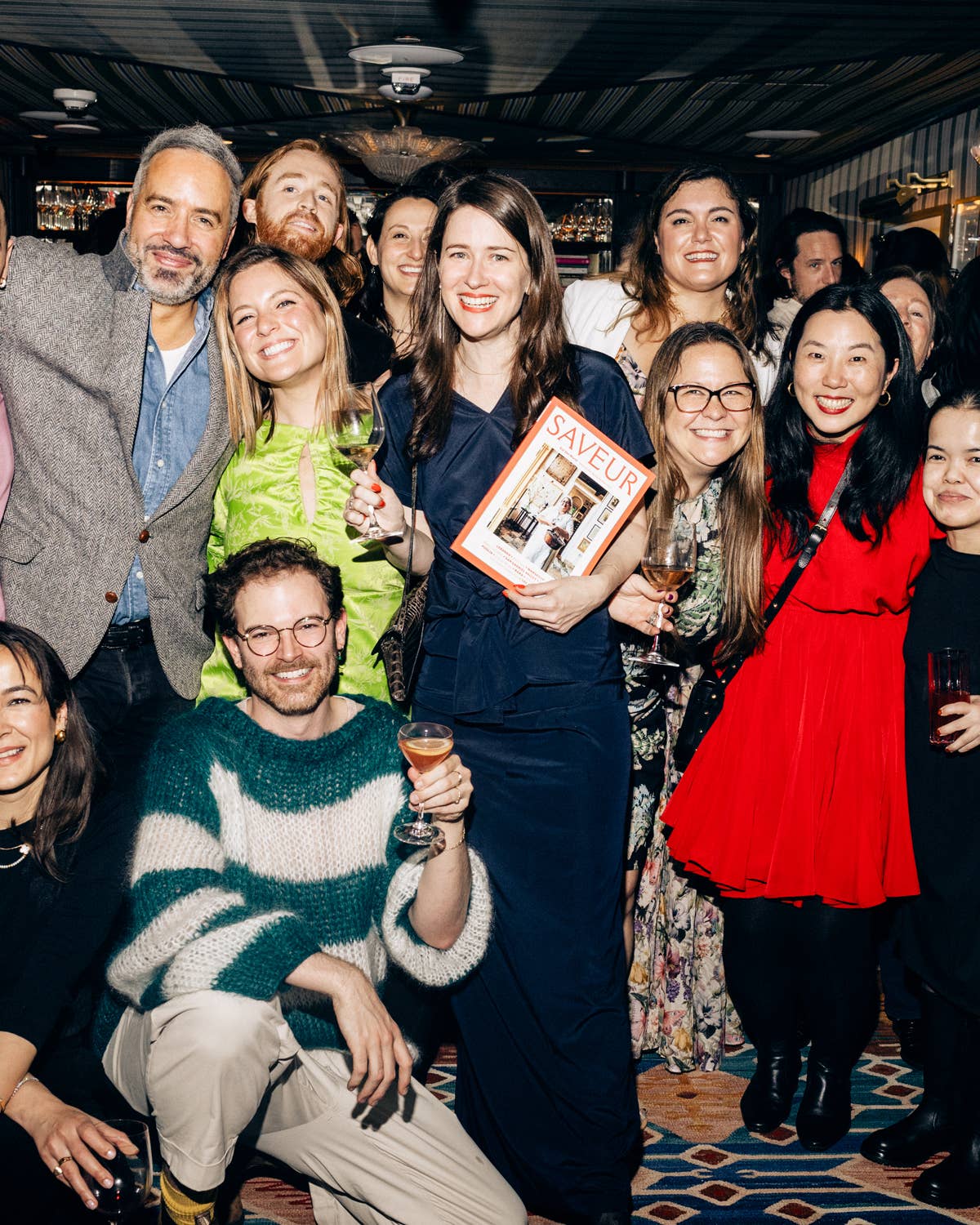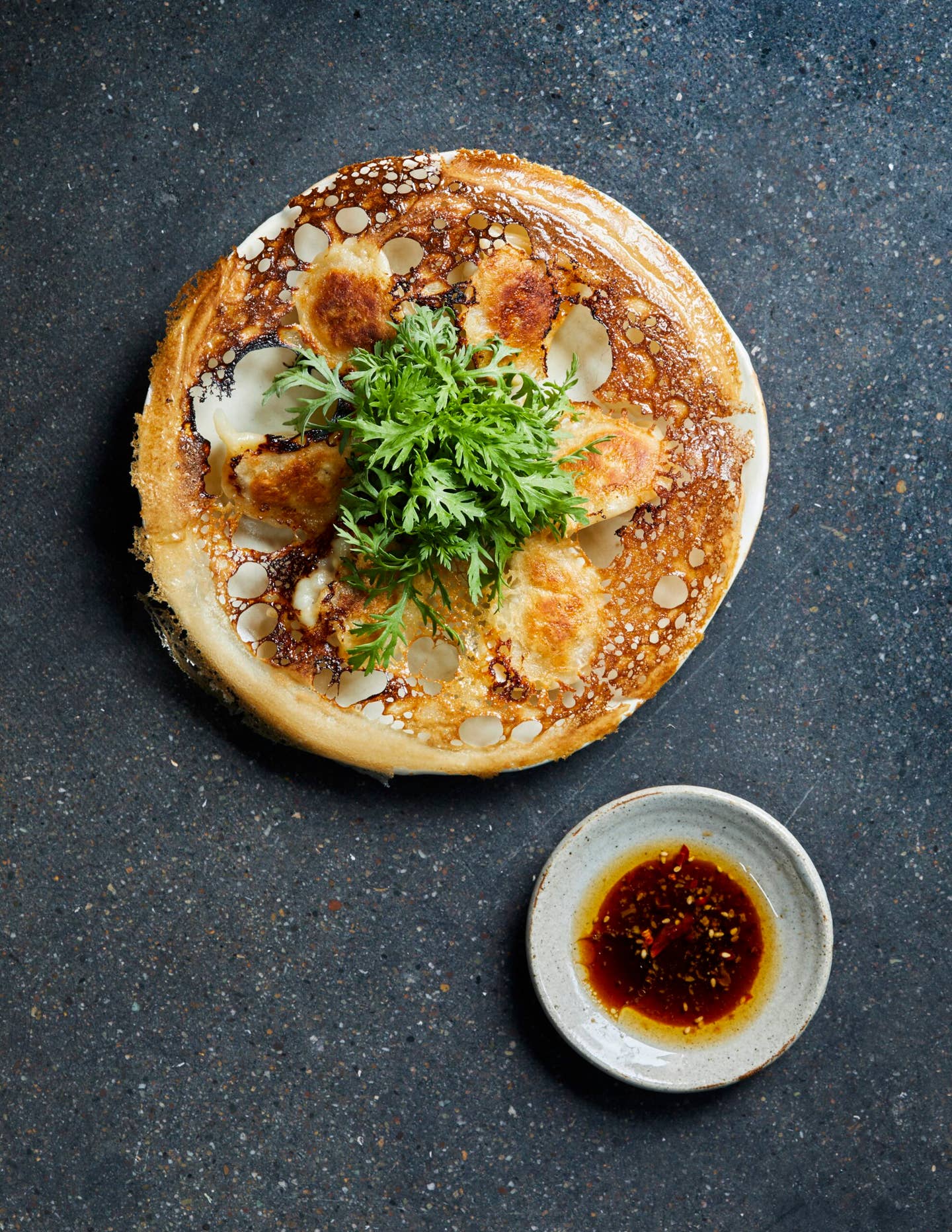
Growing up in a northwest London Jewish family, I was haunted by a thought: that if my great-grandfather, Josef Burochowiz, had just been blessed with a little more stamina and had stayed on the boat a few days longer, I wouldn't have grown up in northwest London at all but instead in New York. I would have happily been one of those American Jews, living in the land of pastrami and bagels, where the buildings were taller, the skies bigger, and everybody was from somewhere else. I liked my foreignness but wanted everyone else to be foreign too. Then, one Saturday lunchtime in 1977, a little bit of America came to me.
My mother, a well-known health columnist, had been invited to a Saturday event at the American embassy. I have no idea why; it was just the sort of thing that happened to her. All I do recall was that it was odd because Saturday mornings were when my parents did the family food shop, so what were we to eat for lunch?
And yet, for the American embassy, Mom would make an exception. Lunchtime came and she was back and carrying with her a shallow cardboard box containing a couple dozen soft, round packages wrapped in thin, glossy, greaseproof paper, endowed with the mammarian curve of golden M's. She had brought us hamburgers. A lot of them.
With hindsight, this could be viewed as a blatant act of cultural imperialism. The first branch of McDonald's had opened in Woolwich, southeast London, in 1974, though it had yet to impact me. I hadn't been there. Now here was the U.S. Embassy—the U.S. government itself, on UK soil—handing out McDonald's hamburgers to a woman who, as a high-profile journalist, could influence opinion. Perhaps there was a CIA briefing document somewhere outlining how the American version of freedom could be spread about the world by the judicious distribution of free McDonald's hamburgers to tastemakers.
The truth of our hamburger windfall was probably a little more prosaic: The embassy had got McDonald's to cater the event, and seeing a number left over and being appalled by the waste, my mother had offered to take them home, thereby dealing with the lunch issue. Whatever the cause, I was delighted.
I had never eaten hamburgers like them. Even cold, there was the intense sweetness of the bun and the juicy meat of the patty and the punch of the pickles. This was what America meant to me: food with a certain shamelessness, lunch with its knickers around its ankles. And, thankfully, I soon found more options from across the pond to try out. Around this time, an American expatriate called Gabriel Gutman launched the Dayvilles chain of ice cream parlors in Britain, based on America's popular Baskin-Robbins.
"There is superb cream in England and excellent chocolate," he told The New York Times. "Nobody ever married the two together. It's been driving me crazy for years." The actress Lee Remick, who had just starred in The Omen and was living in London, was more savage. "They don't know from ice cream in this country," she said, as if identifying the very heart of Britain's famed malaise. Remick had a point. Until Dayvilles arrived you could have any flavor you liked in Britain—as long as it was strawberry, chocolate, or vanilla. Plus the ice cream itself wasn't creamy; it was hard and icy. British ice cream was a beautiful promise, broken.
And now here, praise the gods of greed, was Dayvilles, which, like its role model, proclaimed 32 flavors but seemed to offer many more. There was banana split and bubble gum flavored ice cream, toffee nut crunch, and something called peppermint fudge ripple, which, to a fat boy yet to navigate the hormonal rapids of puberty, sounded seriously naughty and indulgent. This was what America meant to me: It was a place where you could get 32 flavors of ice cream, and one of them was called peppermint fudge ripple.
It didn't end there. In 1977 another American expat called Bob Payton opened the Chicago Pizza Pie Factory off St. James's, and then a handful of Rib Shacks. Music blared, everything came slathered in a sticky vinegary barbecue sauce, and cutlery was optional. We overprivileged kids would go to these restaurants without our parents when we were 13 or 14 and play at being grown-up, while really we were just getting a big sugary, salty hit, eating with our hands, throwing away all of the breeding of our London childhoods. For an hour or two, we were American, and we'd become American through food. It tasted far better than eating British did.
Food in 1970s Britain was not, for most people, hugely encouraging. The generation that had lived through the Second World War still held sway and, as a result, gastronomic indulgence was frowned upon. There were a few restaurants of note, but in your average British home vegetables were still boiled until they could be eaten without the aid of teeth, and exotica rarely went beyond a rudimentary coq au vin.
In our house, fortunately, things were a little different. We were restless in matters of the plate and had what were regarded then as sophisticated tastes for the cuisines of countries like India and China, places we had no expectation of ever visiting. My mother may not have had much time for trends in decor or couture, but when it came to the kitchen, she cared greatly. She made fragrant chicken curries with Bombay duck, a pungent salted and dried fish from India. She bought packs of snails imported from France and laboriously stuffed the canned snail meat into shells filled with garlic butter. Robert Carrier's Great Dishes of the World, first published in 1963 and reprinted in updated editions for years after, gave recipes from the farthest reaches of the planet. The publication in 1961 of Julia Child's Mastering the Art of French Cooking seemed to have turned every aspirational American cook into the budding chef of his or her very own little Left Bank bistro.
She, cooking these international meals, and I, dreaming of hamburgers and fudge-flavored ice cream, were on trend. Back then, on both sides of the Atlantic for those who could afford it, the right way for the fashionable to eat depended upon exotica.
Today, though, the whirligig has turned; we're meant to be dismissive of imports, to be locavores. In Britain, if we dream of American hamburgers, they are no longer from McDonald's. Rather, they are supposed to be made from rare breeds of British beef, raised on local farms. We have come to understand that this is the truly sustainable way to eat; that, with the global population rising to 9 billion by 2050, to do otherwise is to play fast and loose with the planet's ecosystem merely to satisfy our appetites. Hence, we eat local food. Of course each way of eating—21st-century local and mid-century exotic—makes its own emotional kind of sense. We nurture each other through food and show our love through it. We celebrate and we commiserate through it. Localism, with its sweet wash of neighborliness and community, has a logic. To be honest, though, it's nowhere near as much fun as the kind of juvenile thrills I once got from cooling McDonald's hamburgers or flavors of ice cream with triple-barreled names involving the word fudge.
Indeed, as a result of research for a new book on food security in the 21st century, my adult self has come to understand that eating like a locavore is not the most sustainable option. In the late '90s when the term "food miles" was first coined by the British academic Tim Lang, professor of food policy at City University in London, it was simple and easily understandable: The farther your food traveled from field to fork, the worse for the environment it was by dint of the amount of fuel that journey took. It gave environmentally minded consumers a simple way to judge whether they should buy a product. Had it come from as close by as possible? If yes, then into the basket it went.
The problem is it's too simple. Just as eating chicken curry in 1970s Britain didn't make you sophisticated, so eating locally doesn't actually make you an ethical eater. The petrochemicals used in farming and in fertilizers, the energy to build tractors as well as to run them and to erect farm buildings and fences—all of that (and so much more) has to be measured against yield. When you do that, you discover the proportion of your food's carbon footprint caused by its transport is somewhere between just 2 and 4 percent. What matters is not where your food was grown but how it was grown.
Take the McDonald's hamburgers I so adored as a kid. It can take up to 20 pounds of grain to produce one pound of beef. So even if the cow that gave its life for my lunch lived in my garden, one could argue that what would really matter is the volume of carbon inputs that produced the soya it ate. Or to put it another way, a grass-fed animal raised a thousand miles from me would have a much smaller carbon footprint than a grain-fed one raised out back.
What would the fat-cheeked boy I once was, craving the caloric hit of Dayvilles ice cream and McDonald's hamburgers, have made of all this? What would my late mother, with her snails and menus culled from the pages of Robert Carrier, have thought? I think she would have been baffled. Back then we knew nothing about the way a debate around the environment and concerns about industrial agriculture would eventually come to dominate the conversation about how and what we ate. We had other worries. In the 1970s we had the Arab-Israeli wars, Vietnam, the oil crisis, and so much more. All of that was discussed around my family's dinner table—there was a lot of politics in our house when I was a kid. But dinner, the food actually on that table? We never considered it a part of it. Dinner was just dinner.
And sometimes when I think back to a time before the wars over localism and Big Ag, to those days when it was still possible to be thrilled by the first taste of a new kind of hamburger without any of the worry of how it became a hamburger, of how it arrived in its perfectly wrapped packaging and into my hand, I can't deny a certain wistfulness.
Keep Reading
Continue to Next Story










